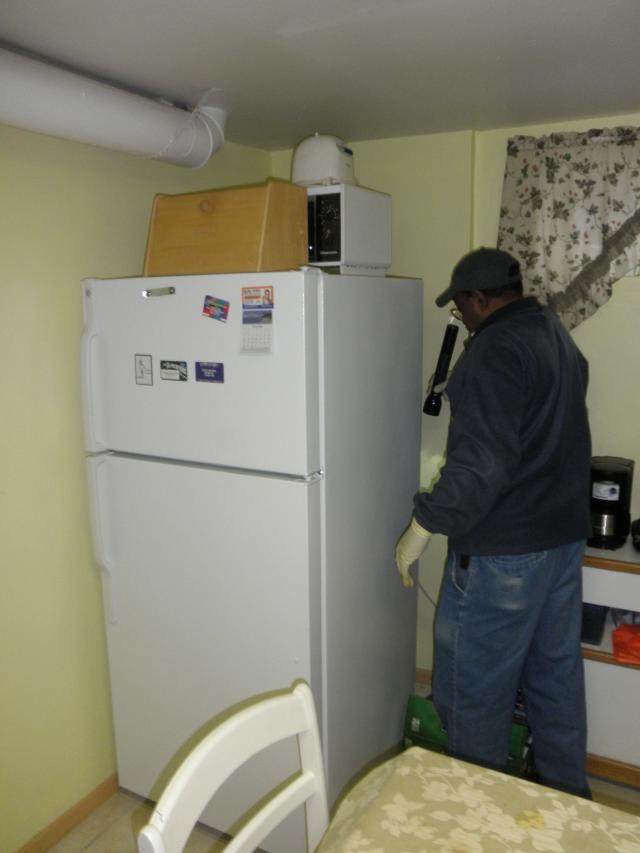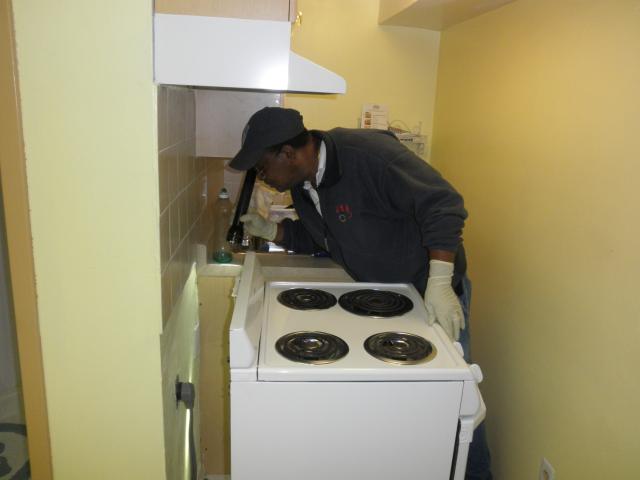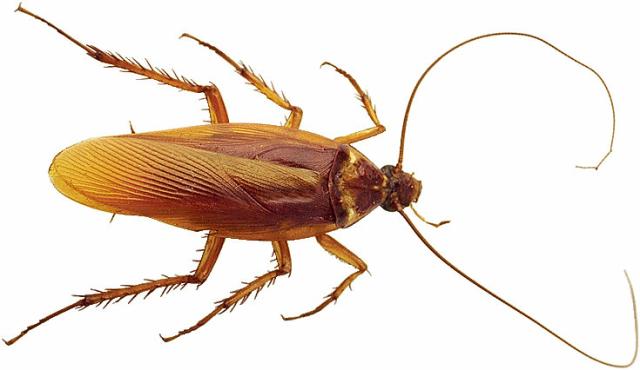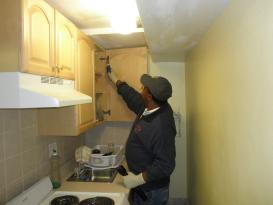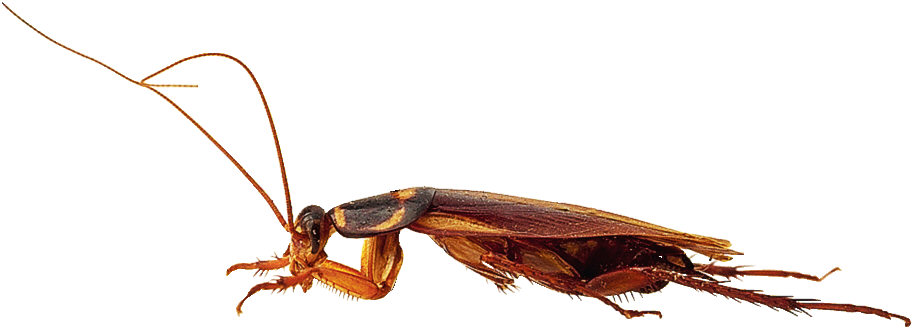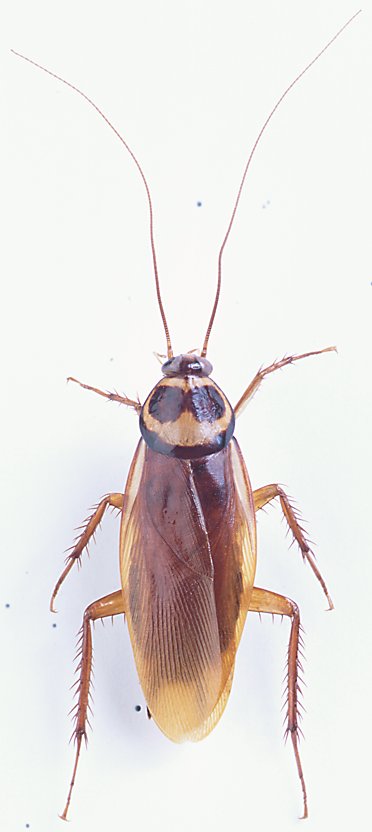


Cockroaches
Identification:
There is approximately 4000 species of cockroaches. They not only carry diseases and cause allergic reactions, they are nuisances. We are just going to concern ourselves with the two that are most prominent in New York.
German cockroach
• Adult about 1/2’’ with wings covering the abdomen.
Adult about 1/2’’ with wings covering the abdomen.
• Color can be golden yellow to dark brown with two stripes running length wise.
Color can be golden yellow to dark brown with two stripes running length wise.
• Commonly found where food is stored, processed or consumed.
Commonly found where food is stored, processed or consumed.
• Nocturnal - feeds at night when the light is turned off. Only seen during the day when disturbed or there is a case of severe infestation.
Nocturnal - feeds at night when the light is turned off. Only seen during the day when disturbed or there is a case of severe infestation.
• Egg to adult in less than 1 month.
Egg to adult in less than 1 month.
• Female produces 4-8 egg capsules in her lifetime containing 30-48 eggs each.
Female produces 4-8 egg capsules in her lifetime containing 30-48 eggs each.
• Eats almost anything.
Eats almost anything.
American cockroach (also called water bugs)
• Large approx. 1-1.5’’ with wings covering their entire abdomen.
Large approx. 1-1.5’’ with wings covering their entire abdomen.
• Brown to reddish brown in color.
Brown to reddish brown in color.
• Lives up to 2 years.
Lives up to 2 years.
• Female produces 15-90 eggs each containing 14-16 eggs during its lifetime.
Female produces 15-90 eggs each containing 14-16 eggs during its lifetime.
• Prefer warm, dark, moist places and will live in drains and sewer.
Prefer warm, dark, moist places and will live in drains and sewer.
• Can survive 2-3 months without food but only 1 month without water.
Can survive 2-3 months without food but only 1 month without water.
• Very good fliers.
Very good fliers.
• Feeds on decaying matter, sweets, clothing or even bookbinding.
Feeds on decaying matter, sweets, clothing or even bookbinding.
• Nocturnal
Nocturnal
Prevention:
Occupants:
• Do not leave garbage in the building overnight.
Do not leave garbage in the building overnight.
• Wash and put away all pots, plates and utensils after each meal.
Wash and put away all pots, plates and utensils after each meal.
• Clean stove, microwave, grill, etc. after each use.
Clean stove, microwave, grill, etc. after each use.
• Keep apartment clean and tidy and avoid clutter.
Keep apartment clean and tidy and avoid clutter.
• Keep food and pet foods in sealed containers and discard left over pet food and water before you retire to bed.
Keep food and pet foods in sealed containers and discard left over pet food and water before you retire to bed.
• Do not store empty bottles, boxes and plastic containers in apartment.
Do not store empty bottles, boxes and plastic containers in apartment.
Management
• Seal all holes, cracks or crevices on building through which they can enter.
Seal all holes, cracks or crevices on building through which they can enter.
• Fix all leaking pipes and remove any water sources.
Fix all leaking pipes and remove any water sources.
• Place screens on sewer and windows.
Place screens on sewer and windows.
• Reduce or eliminate hiding places.
Reduce or eliminate hiding places.
• Good sanitation is the key.
Good sanitation is the key.
This is a guide to help you identify and to prevent roaches. Please use accordingly and research the subject extensively. New ways and methods are being discovered from time to time.
References: NPMA Field Guide to Structural Pests 2nd Edition
Prepared by: Alvin J Patterson
Blank:





